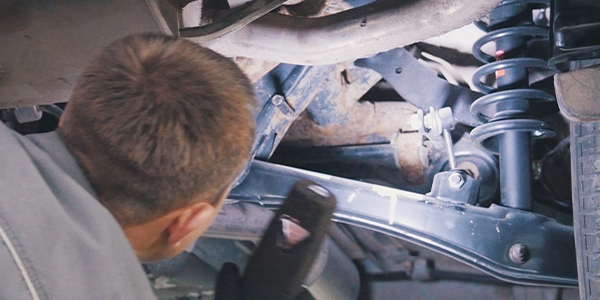Some owners of 2002-’05 Sedona vehicles produced from May 1, 2001, to Aug. 31, 2005, may complain of front suspension noise over rough road surfaces at speeds between 18-31 mph. To reduce the noise, Kia has redesigned the strut mount with a modified rubber composition to improve the overall sound dampening in the affected speed range. However, all other suspension components should be checked for performance prior to installing these replacement strut mounts. Concerns with worn out struts and/or rubber mounting components should be addressed before installing these revised mounts.
Parts Information:
- Strut insulator assembly, P/N Q0K52 Y34380Q
Service Procedure:
- Raise and properly support the vehicle.
- Remove the front tire and wheel assembly.
- Remove the two lower strut to upper steering knuckle bolts on each side.
- Disconnect the brake hose and ABS wheel speed sensor from the strut assembly.
Notice: Note the orientation of the mount before removal from the vehicle.
- Open the hood and remove the four upper strut retaining nuts.
- Remove the strut assembly from the vehicle. Mount the strut assembly into the strut compressor.
- Compress the strut assembly using manufacturers’ instructions provided with the tool and replace the upper strut mount assembly as required. Torque the strut-to-strut mount nut to 88-101 lbs.-ft. (120-137 Nm).
Notice: Position the dimple to match mount orientation as removed in Step 5.
- Install the strut assembly into the vehicle. Tighten the four upper mount nuts to 33-46 lbs.-ft. (46-62 Nm).
- Connect the brake hose and ABS speed sensor to their retaining bracket.
- Install the two lower strut to upper steering knuckle bolts and nuts, and tighten to 65-79 lbs.-ft. (88-108 Nm).
- Install the wheel and tire assembly. Tighten the lug nuts to 65-79 lbs.-ft. (88-108 Nm).
- Repeat the procedure for the other side, if necessary.
- Perform a wheel alignment.
Courtesy of IDENTIFIX.
For additional information, visit www.identifix.com.












